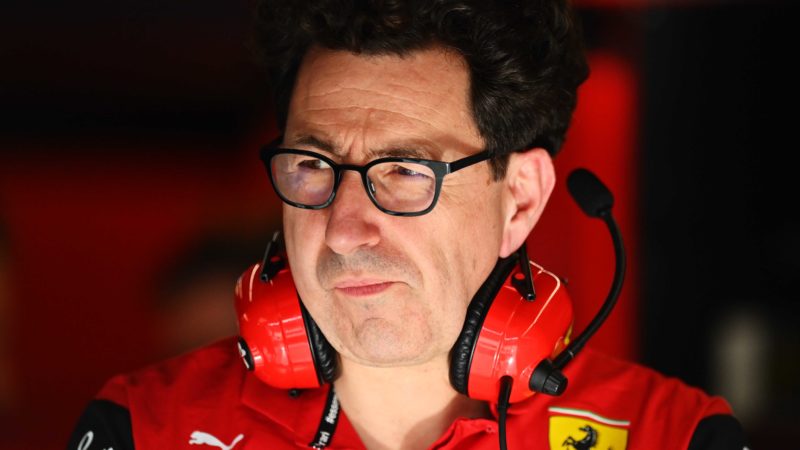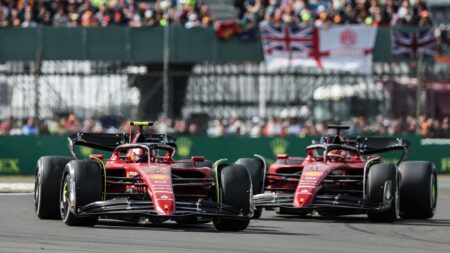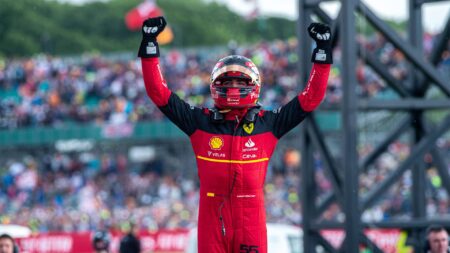In the light of that, what Ferrari did made some kind of sense. Leading the race, do you hand track position to Hamilton by stopping both cars, with the likelihood of there being just nine or 10 laps to go to the chequered flag by the time Ocon is removed?
Hamilton, as at Barcelona, had already demonstrated very strong race pace in the opening medium tyre stint and had been closing the Ferraris down at the point when Sainz was still ahead of Leclerc. He had run longer before pitting for hards, which were still going to be very serviceable for any sprint to the flag.
Ferrari could no doubt envisage a scenario where it handed Hamilton the lead and then, based on those long-run times, didn’t have sufficient tyre-offset pace to pass him again. Let’s not forget, this was a man who had won seven of the past eight Silverstone races, more than once demonstrating searing pace on used tyres that had no logical right to be going that quickly. Had Leclerc lost the race that way, the team might have had some difficult questions to answer.
So, let’s leave him out, bring in Carlos for softs, and task him with keeping Hamilton / Perez behind on the same tyres, while protecting Charles on his used hards. That was clearly the plan, Ferrari confirming as much by asking Sainz to drop back the maximum permitted 10 car lengths behind Leclerc when the safety car period ended.
Carlos though, perhaps understandably, was not up for that. He didn’t fancy the prospect of driving at anything less than full beans while trying to keep Lewis Hamilton and Sergio Perez behind him on fresh softs.

Carlos Sainz was determined to not succumb to the same fate as Rubens Barrichello and Felipe Massa
And this is where it’s interesting. In the Jean Todt / Ross Brawn era at Ferrari, there would have been no question: do as you’re told! We’ve asked you to drop back, so do it… Remember Austria 2002, when Rubens Barrichello, in a totally dominant Ferrari team, was made to hand an Austrian victory to Michael Schumacher despite outdriving him all weekend. When Michael had already won four of the first five races and no other team was even close…
Even in the Stefano Domenicali era with Alonso / Massa, it was still the same. In that German race in 2010, Fernando had outqualified Felipe by a full half-second and was only behind him in the first place because there’d been less grip on the P2 side of the grid than Massa’s P3. That situation was entirely predictable. Enough for the team to want to tell Felipe at dinner on Saturday night that should such a situation transpire, then he needed to defer to Fernando, whose race and championship fight, was with Vettel’s Red Bull, not his team-mate.
It’s just that they couldn’t agree on who was going to tell him. Domenicali thought it would be bad for Felipe’s head to have such an instruction coming from the team principal and wanted race engineer Rob Smedley to break the bad news. Rob was less than keen. And, over dinner, it didn’t happen. Hence, in the race, the rather pointed and slightly stroppy, “Fernando is faster than YOU. Do you understand?
Back to Silverstone. Sainz had been as surprised as anyone when they told him ‘P1!’ at the end of qualifying. In truth, he was only on pole because Leclerc had spun on his final hot lap and tripped up Verstappen, who had to slow for the resultant yellow.








